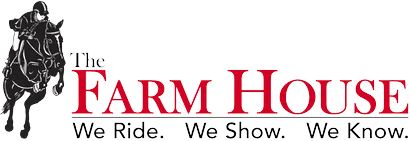
How to Protect Your Horse’s Hooves in the Heat
StaffWhen summer hits, your horse’s hooves are facing a full-on environmental assault, extreme temperatures, dry ground, sudden storms, hard footing, and a hydration rollercoaster. If you want your horse sound, happy, and not acting like every step is lava, it’s time to step up your hoof care game.
Let’s get into the real stuff, what’s happening, why it matters, and what you can actually do about it.
Heat + Dry Ground = Brittle, Cracking Hooves
When the ground bakes under the sun for weeks, it draws moisture out of the hoof wall, causing it to become dry, rigid, and prone to cracks and chips. Hooves need a certain amount of elasticity to absorb shock when that’s gone, hello discomfort, bruising, and even lameness.
Qhen the ground bales under thev sun for weels, it drawsoisture out fo the hoof wall, causing it to
What you can do:
- Hydration from the inside out: Ensure your horse always has access to clean, cool water, and offer electrolytes during hot spells to support water retention.
- Moisture balance: Wet the hooves before turnout or rides if the ground is excessively dry. A quick hoof soak (or just standing in a puddle for a few minutes) can help prevent drying.
- Try Pharmakas Hoof Balm Strengthener , Pharmakas Hoof Oil Daily Care , Effol Hoof Ointment
Too Much Water = Soft, Mushy, Weak Hooves
Summer storms or over-irrigated pastures can swing you the other direction, hooves that are constantly wet can become soft and spongy, losing structure. That’s when you start seeing flares, stretched white lines, and a higher risk of abscesses or thrush.
How to balance:
- Ensure turnout areas have dry spots (like gravel pads or mats near gates).
- Don’t leave horses standing in muck or flooded areas, they’re not water buffalo.
- Avoid over-soaking hooves. Daily wetting is okay, but hours standing in water weakens structure.
Nutrition & Hydration: Hooves Grow from Within
Healthy hooves start with a balanced diet. Biotin gets a lot of attention, but it’s not the only player. Methionine, zinc, copper, essential vitamins and amino acids all support strong keratin development , the tough protein that makes up hooves.
Pro hoof-building diet basics:
- High-quality forage (hay or pasture should be the foundation)
- Correct levels of protein (amino acids = hoof-building blocks)
- Have your soil or pasture tested for vitamin content to find gaps in nutrition
- A ration balancer or hoof-specific supplement containing biotin (at least 20mg/day), zinc, methionine, and copper
Also, keep your horse hydrated. Dehydration = poor circulation = slower, lower-quality hoof growth.
Hoof Protection on the Go: Shoes, Boots, or Barefoot?
In summer, the ground gets harder, and concussion-related hoof issues can spike, bruising, sole tenderness, and cracks can creep up fast.
Options:
- Hoof Socks: Great for barefoot horses in dry or rocky terrain. Offers superior protection for the hooves of horses. Crafted from breathable materials, it helps to encourage air circulation and keep the hooves dry and healthy.
- Sole hardeners: For sensitive-footed horses, applying a product like Sole Freeze Hoof Hardener & Pain Reliever help toughen soles safely.
Farrier Care: Don’t Skip Appointments Just Because It’s Hot
Summer hoof growth often increases slightly due to better circulation and nutrition, so regular trimming is more important, not less. Skipping trims can lead to flares, imbalance, and increased cracking, all harder to fix later.
Schedule trims every 4–6 weeks, depending on your horse’s growth rate and workload. If you see changes (more chipping, new cracks, or changes in shape), talk to your farrier early.
Watch for Red Flags
Here’s what to keep an eye on:
- Cracks that extend above the nail line
- Heat in the hoof or digital pulse (could indicate bruising or abscess)
- Sore movement on hard surfaces
- Persistent thrush even in dry conditions (check your moisture balance)
Final Thoughts: Don’t Just Survive the Heat — Be Proactive
Hoof care in summer isn’t about panic every time the sun shines, it’s about paying attention. A little prevention now saves a lot of stress (and vet bills) later. Keep things balanced: not too wet, not too dry, and make friends with your farrier.
Your horse might not thank you in words, but they’ll thank you by not limping.
